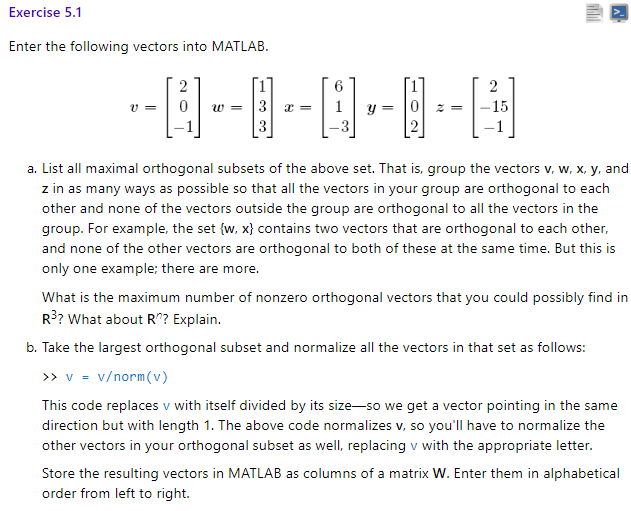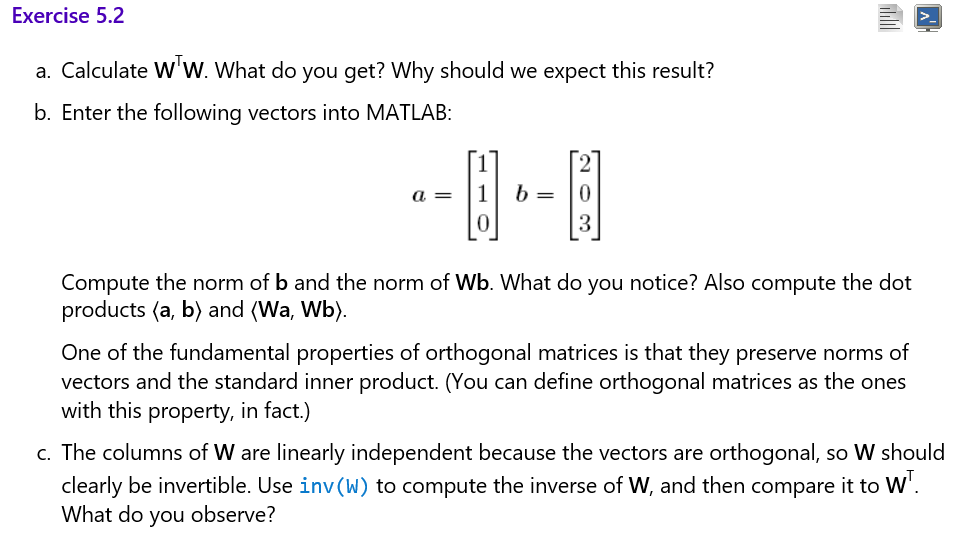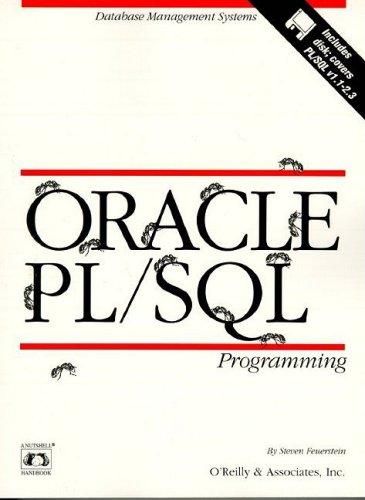

Exercise 5.1 Enter the following vectors into MATLAB 6 a. List all maximal orthogonal subsets of the above set. That is, group the vectors v, w, x, y, and z in as many ways as possible so that all the vectors in your group are orthogonal to each other and none of the vectors outside the group are orthogonal to all the vectors in the group. For example, the set (w, x} contains two vectors that are orthogonal to each other, and none of the other vectors are orthogonal to both of these at the same time. But this is only one example; there are more What is the maximum number of nonzero orthogonal vectors that you could possibly find in R3? What about R? Explain b. Take the largest orthogonal subset and normalize all the vectors in that set as follows: -vorm(v) This code replaces v with itself divided by its size-so we get a vector pointing in the same direction but with length 1. The above code normalizes v, so you'll have to normalize the other vectors in your orthogonal subset as well, replacing v with the appropriate letter Store the resulting vectors in MATLAB as columns of a matrix W. Enter them in alphabetical order from left to right. Exercise 5.2 a. Calculate W'W. What do you get? Why should we expect this result? b. Enter the following vectors into MATLAB: 0 Compute the norm of b and the norm of Wb. What do you notice? Also compute the dot products (a, b) and (Wa, Wb). One of the fundamental properties of orthogonal matrices is that they preserve norms of vectors and the standard inner product. (You can define orthogonal matrices as the ones with this property, in fact.) c. The columns of W are linearly independent because the vectors are orthogonal, so W should clearly be invertible. Use inv(W) to compute the inverse of W, and then compare it to W What do you observe? Exercise 5.1 Enter the following vectors into MATLAB 6 a. List all maximal orthogonal subsets of the above set. That is, group the vectors v, w, x, y, and z in as many ways as possible so that all the vectors in your group are orthogonal to each other and none of the vectors outside the group are orthogonal to all the vectors in the group. For example, the set (w, x} contains two vectors that are orthogonal to each other, and none of the other vectors are orthogonal to both of these at the same time. But this is only one example; there are more What is the maximum number of nonzero orthogonal vectors that you could possibly find in R3? What about R? Explain b. Take the largest orthogonal subset and normalize all the vectors in that set as follows: -vorm(v) This code replaces v with itself divided by its size-so we get a vector pointing in the same direction but with length 1. The above code normalizes v, so you'll have to normalize the other vectors in your orthogonal subset as well, replacing v with the appropriate letter Store the resulting vectors in MATLAB as columns of a matrix W. Enter them in alphabetical order from left to right. Exercise 5.2 a. Calculate W'W. What do you get? Why should we expect this result? b. Enter the following vectors into MATLAB: 0 Compute the norm of b and the norm of Wb. What do you notice? Also compute the dot products (a, b) and (Wa, Wb). One of the fundamental properties of orthogonal matrices is that they preserve norms of vectors and the standard inner product. (You can define orthogonal matrices as the ones with this property, in fact.) c. The columns of W are linearly independent because the vectors are orthogonal, so W should clearly be invertible. Use inv(W) to compute the inverse of W, and then compare it to W What do you observe








